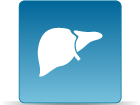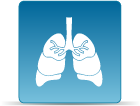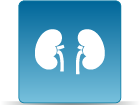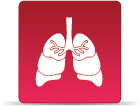1,4-Dioxane
CASRN 123-91-1 | DTXSID4020533
- Toxicological Review (PDF) (419 pp, 3.69 M)
- IRIS Summary (PDF) (32 pp, 291 K)
Noncancer Assessment
Reference Dose for Oral Exposure (RfD) (PDF) (32 pp, 291 K)
Last Updated: 08/11/2010
| System | RfD (mg/kg-day) | Basis | PoD | Composite UF | Confidence |
|---|---|---|---|---|---|
| Hepatic, Urinary | 3 x 10-2 | Liver and kidney toxicity |
NOAEL
: 9.6 mg/kg-day |
300 | Medium |
Reference Concentration for Inhalation Exposure (RfC) (PDF) (32 pp, 291 K)
Last Updated: 09/20/2013
| System | RfC (mg/m3) | Basis | PoD | Composite UF | Confidence |
|---|---|---|---|---|---|
| Nervous, Respiratory | 3 x 10-2 | Atrophy and respiratory metaplasia of the olfactory epithelium |
LOAEL
(HEC): 32.2 mg/m3 |
1000 | Medium |
Cancer Assessment
Weight of Evidence for Cancer (PDF) (32 pp, 291 K)
Last Updated: 09/20/2013
| WOE Characterization | Framework for WOE Characterization |
|---|---|
| Likely to be carcinogenic to humans | Guidelines for Carcinogen Risk Assessment (U.S. EPA, 2005) |
- In accordance with the Guidelines for Carcinogen Risk Assessment (U.S. EPA, 2005), 1,4-dioxane is characterized as "likely to be carcinogenic to humans."
- This may be a synopsis of the full weight-of-evidence narrative.
Quantitative Estimate of Carcinogenic Risk from Oral Exposure (PDF) (32 pp, 291 K)
Oral Slope Factor:
1 x 10 -1 per mg/kg-day
Drinking Water Unit Risk:
2.9 x 10 -6 per µg/L
Extrapolation Method:
Log-logistic model with linear extrapolation from the POD (BMDL50HED) associated with 50% extra cancer risk.
Tumor site(s): Hepatic
Tumor type(s): Hepatocellular adenoma and carcinoma (Kano et al. 2009)
Quantitative Estimate of Carcinogenic Risk from Inhalation Exposure (PDF) (32 pp, 291 K)
Inhalation Unit Risk:
5 x 10 -6 per µg/m3
Extrapolation Method:
Multi-tumor dose-response model with linear extrapolation from the POD (BMDL10HED) associated with 10% extra cancer risk.
Tumor site(s): Reproductive, Gastrointestinal, Hepatic, Respiratory, Other, Urinary
Tumor type(s): Multiple (nasal, liver, kidney, peritoneal, mammary gland, and Zymbal gland) (Kasai et al. 2009)
- Human Health Benchmarks for Pesticides (HHBP). This database provides human health benchmarks for pesticides that may be present in drinking water.
- Office of Pesticide Programs Pesticide Chemical Search. This database provides links to health effects information and registration status for pesticides.
- Chemistry Dashboard. This database provides information on chemical structures, experimental and predicted physicochemical, and toxicity data.
Sep 2013: IRIS Toxicological Review of 1,4-Dioxane (With Inhalation Update) (Final Report) (Report)
Sep 2011: IRIS Toxicological Review of 1,4-Dioxane (with Inhalation Update) (External Review Draft) (Report)
May 2011: IRIS Toxicological Review of 1,4-Dioxane (Interagency Science Consultation Draft) (Report)
Aug 2010: IRIS Toxicological Review of 1,4-Dioxane (Final Report, 2010) (Report)
Aug 2010: IRIS Toxicological Review of 1,4-Dioxane (Interagency Science Discussion Draft) 2010 (Report)
Apr 2009: IRIS Toxicological Review of 1,4-Dioxane (External Review Draft, 2009) (Report)
You will need Adobe Reader to view some of the files on this page. See EPA’s PDF page to learn more.










